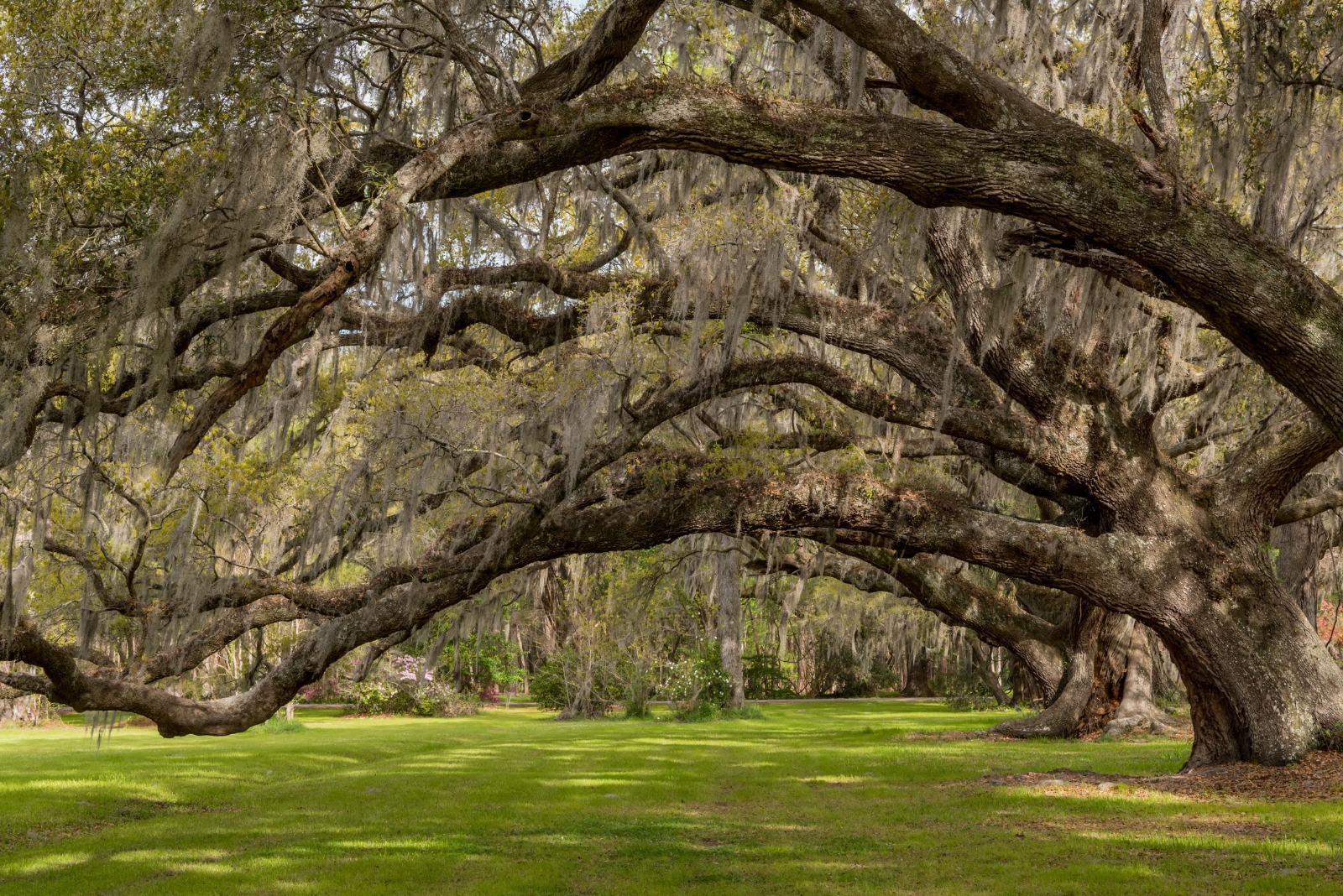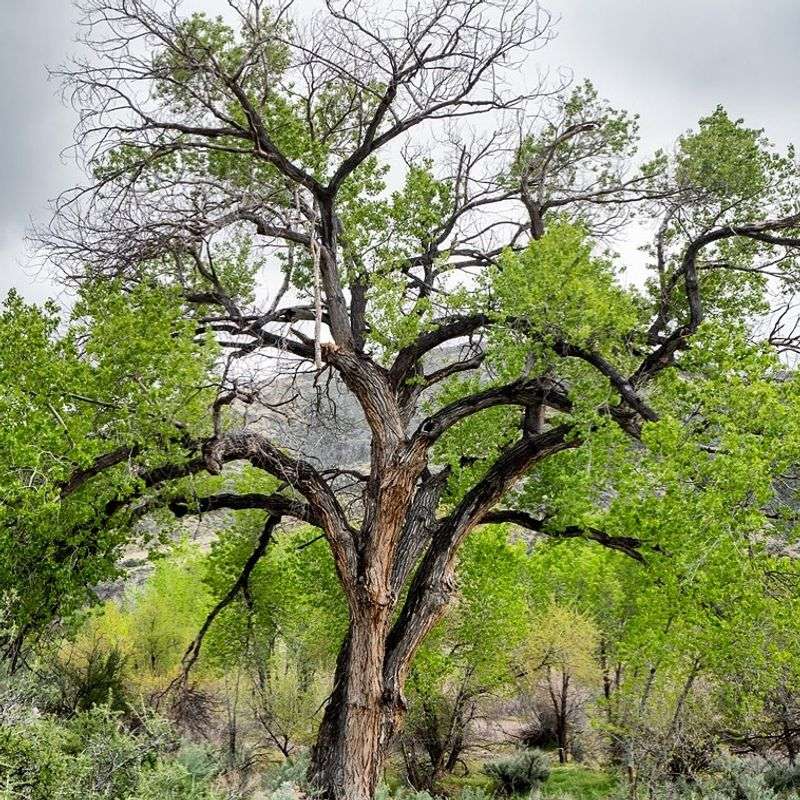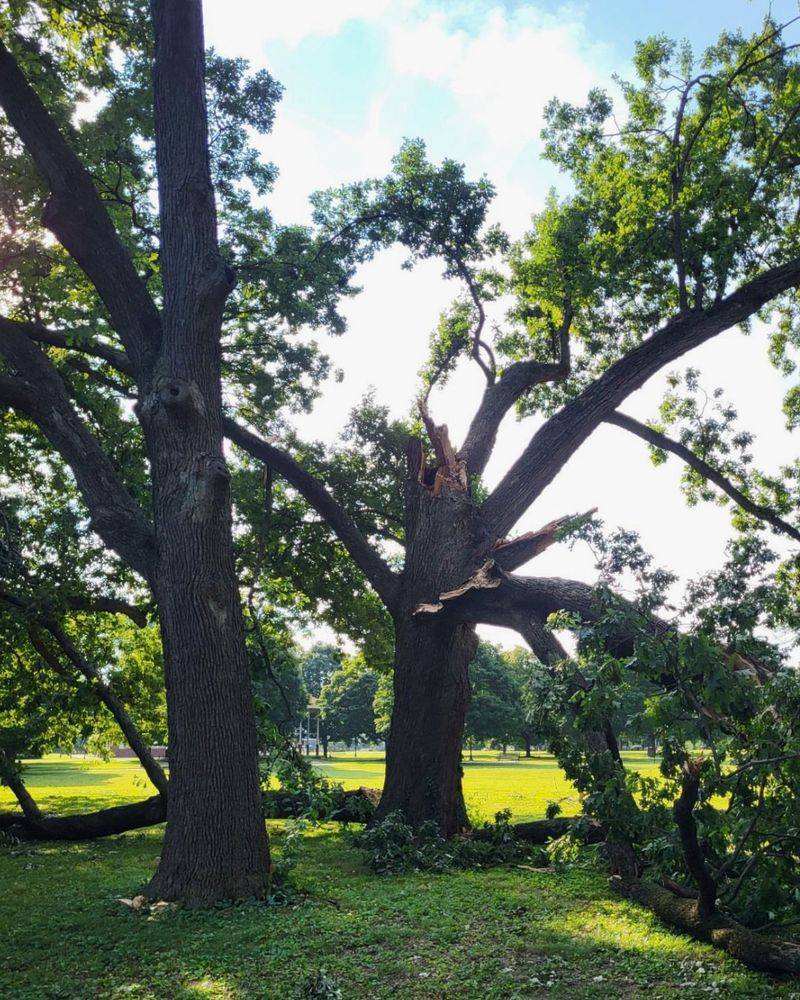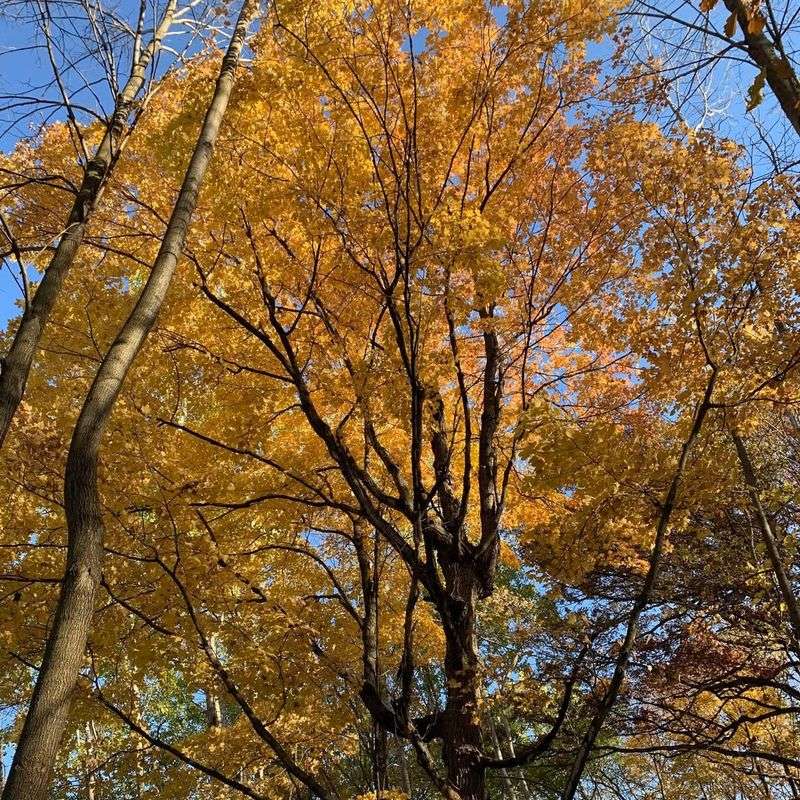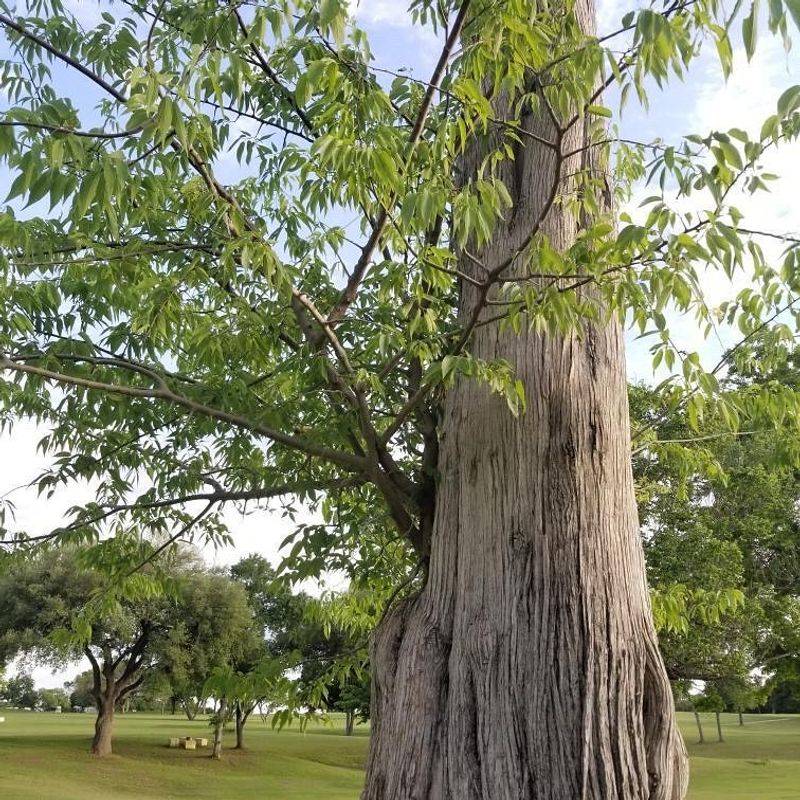Cutting down a tree on your property might seem like your choice, but Iowa has rules that protect certain trees from removal. Whether they’re growing in public spaces, historic areas, or special conservation zones, some trees are off-limits without proper permits.
Breaking these regulations can lead to hefty fines and legal trouble that nobody wants to deal with.
1. Heritage Oak Trees In Public Parks
Iowa treasures its ancient oak trees, especially those standing tall in public parks for over a century. Many communities have designated these giants as heritage trees, which means removing them requires city council approval and special permits.
Penalties for unauthorized cutting can reach thousands of dollars, plus you might face criminal charges depending on the tree’s age and significance. Always check with your local parks department before touching any oak in public spaces, because what looks like just another tree could be a protected landmark with serious legal protection behind it.
2. Black Walnut Trees On Conservation Land
Black walnut trees hold special value on Iowa conservation lands because they provide critical habitat for wildlife and prevent soil erosion. Conservation easements often prohibit cutting these trees without written permission from the managing agency.
Violating these restrictions means facing fines that start around $500 but can climb much higher for mature specimens. The wood might be valuable, but the legal consequences aren’t worth the risk. Contact the Iowa Department of Natural Resources before making any decisions about black walnuts on protected property, since the rules vary by location and specific easement terms.
3. American Elm Trees In Historic Districts
Historic districts across Iowa protect their remaining American elm trees with strict preservation ordinances. Since Dutch elm disease wiped out millions of these beauties, survivors receive special legal status that prevents removal without historic preservation board approval.
Cutting one down illegally could cost you $1,000 or more in fines, plus mandatory tree replacement at your expense. Even if the tree looks sick, you’ll need a certified arborist’s report and proper permits before removal. Check with your city’s historic preservation office to understand the specific requirements for your neighborhood.
4. Cottonwood Trees Along Waterways
Cottonwoods growing along streams, rivers, and lakes in Iowa often fall under riparian buffer zone protections. These trees stabilize riverbanks, filter runoff, and create essential wildlife corridors that state and federal agencies actively protect.
Removing them without proper permits violates environmental protection laws and can trigger fines exceeding $2,500. You might also face restoration requirements that force you to replant and maintain new trees at significant personal cost. Before touching any cottonwood near water, contact the Iowa DNR to determine if buffer zone regulations apply to your situation.
5. Bur Oak Trees In City Rights-of-Way
That bur oak between the sidewalk and street might be on your property line, but it’s probably within the city’s right-of-way, making it public property. Most Iowa municipalities strictly regulate tree removal in these areas to maintain urban canopy and property values.
Cutting one down without permission can result in fines starting at $750, plus you’ll likely pay for replacement planting. Even if branches are causing problems, you need city approval before pruning significantly. Call your city forester or public works department to request proper evaluation and permits before doing any work.
6. Sugar Maple Trees In State Forest Areas
State forests protect sugar maples under comprehensive forest management plans that prohibit unauthorized cutting. These trees support Iowa’s maple syrup industry and provide spectacular fall color that draws tourists and supports local economies.
Penalties for illegal removal on state land include fines up to $5,000 and possible jail time for repeat offenders or large-scale violations. The state takes timber theft seriously, using surveillance and enforcement patrols to catch violators. If you need firewood or timber from state forests, apply through the official permit system rather than risking criminal charges.
7. Eastern Red Cedar In Wildlife Management Areas
Wildlife management areas protect eastern red cedars because they provide crucial winter cover for birds and small mammals. While some cedar removal is allowed for prairie restoration, cutting them without authorization violates wildlife protection regulations.
Fines typically range from $300 to $1,500 depending on how many trees you remove and whether you damaged surrounding habitat. Management plans carefully balance cedar control with wildlife needs, so unauthorized cutting disrupts years of conservation work. Always obtain written permission from the managing agency before removing any cedar on public wildlife lands to avoid legal problems.
8. Hackberry Trees Near Protected Wetlands
Hackberry trees growing within 100 feet of protected wetlands often receive automatic protection under federal and state wetland regulations. These trees stabilize wetland edges, filter pollutants, and provide food for migrating birds throughout the year.
Removing them can trigger violations of the Clean Water Act, resulting in federal fines starting at $2,500 per tree, plus state penalties. You might also face mandatory wetland restoration requirements that cost tens of thousands of dollars. Before cutting any hackberry near water or wet areas, consult with the Army Corps of Engineers and Iowa DNR to determine if wetland protections apply.

